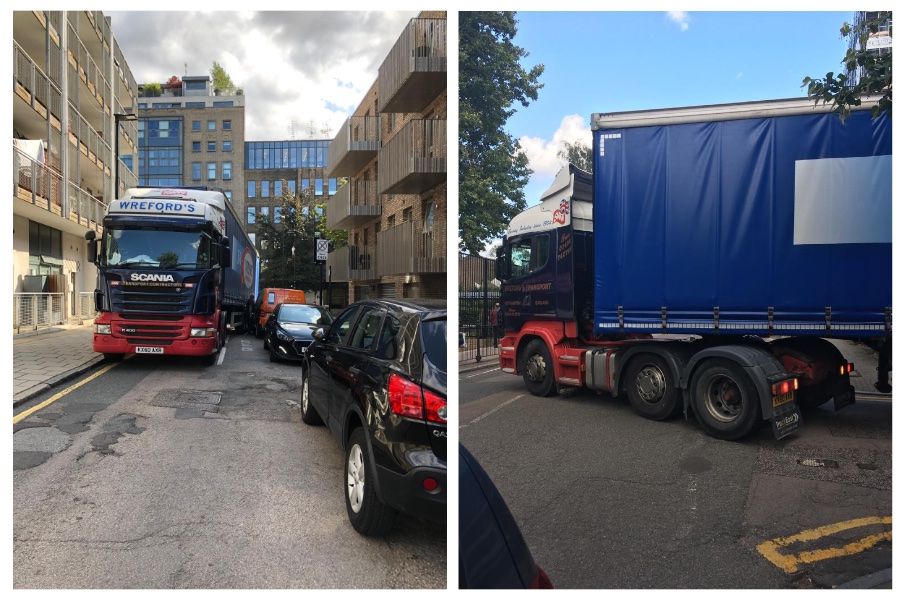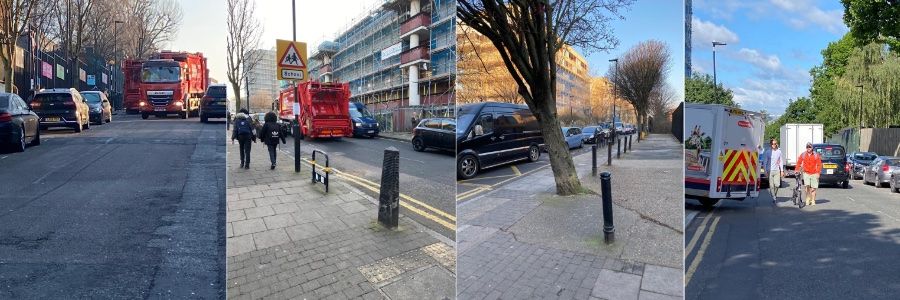Pupils walking and cycling to local Barnsbury Schools face the threat of serious road danger and damage to their health every step of the way as traffic cuts through small residential streets.
The school run should be a safe journey to begin a day of learning, but many pupils in Islington instead face the fear and threat of traffic injury and are suffering from the illegal levels of air pollution damaging their young lungs, resulting in long term health problems such as asthma, heart disease, mental health problems, cancer and a reduction in their educational attainment.
Dangerous cut throughs in Barnsbury
There are many examples of cut throughs in Barnsbury. They pose a significant threat at staggered cross road junctions such as the one on Rodney and Donegal Street adjacent to Joseph Grimaldi park, an area used by children at The Gower School, Elizabeth Garret Anderson School, Winton Primary School and the many residents living in this densely populated area. During the school run, this area is filled with children travelling in all directions. However, it is completely dominated by motor traffic and it has no zebra crossing. In fact, Rodney Street was designated by the council as a Clean Air Walkway, which was supposed to take pedestrians away from the noise, pollution and stress of traffic on Pentonville Road between Kings Cross and Angel. Sadly, since the advent of Sat Nav, Rodney, Donegal, and Cynthia Street are now congested dangerous cut through roads used by HGVs, taxis, cars and heavy construction vehicles passing through the borough. These narrow streets are snarled up with traffic jams, idling cars and vans, vehicles mounting the curbs, polluting the air above legal levels and drivers honking and shouting at each other. This is no way for children to start their day.

Is the air safer inside a car?
The journey to and from school creates a lot of anxiety for parents who want to protect their children from dangerous driving and air pollution. For some, the solution is to travel by car. The reality is that being inside a car is more dangerous; studies show air pollution is 9 to 12 times higher inside the car than it is for those walking or cycling along the same urban routes.
Does cut-through traffic create a greater risk of injury for pedestrians?
Each mile driven on a minor urban road results in 17% more killed or seriously injured pedestrians than a mile driven on an urban A road. In relation to slight injuries, there are 66% more pedestrians injured per-mile driven on minor urban roads, compared to each mile driven on urban A roads. If a residential, back-street route is longer in distance than the main road, the risk of injury grows further.
There are likely to be several reasons for this. Narrow residential streets were never designed to accommodate large volumes of motor vehicles, there is a lack of pedestrian crossings and pedestrians do not feel the need to check for cars on small residential streets as they do not expect to see them on small quiet streets.
What is the risk of death or serious injury for children?
Research has shown that there are substantially more child pedestrian casualties per-mile driven on minor roads compared to A roads. Driving a mile on a minor (residential) urban road is twice as likely to kill or seriously injure a child pedestrian, and three times more likely to kill or seriously injure a child cyclist, compared to driving a mile on an urban A road.
What is the solution?
Making this densely populated area, with little green space, people friendly with a Low Traffic Neighbourhood (also known as People Friendly Streets) would improve the health, life expectancy and educational attainment for all the children who live and go to school here.
Sources
Air pollution more harmful to children in cars than outside, warns top scientist








